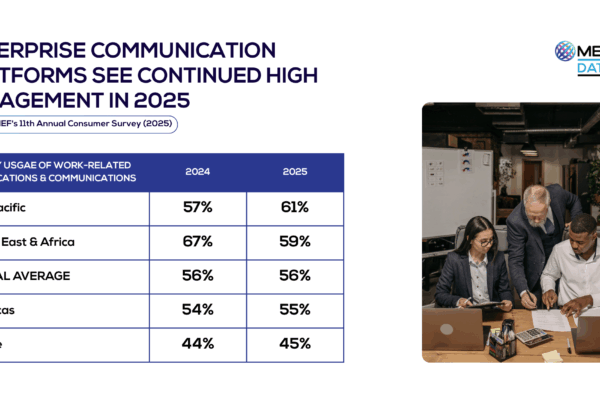MEF’s Riccardo Amati highlights Twilio’s strong Q2 with record revenue, free cash flow, and improved efficiency, but cautious Q3 guidance and margin pressures sent shares down over 10%. Despite raising full-year forecasts, Twilio faces low-margin product mix, competition, and cautious spending, while shifting toward an AI-driven customer engagement platform to balance growth, profitability, and innovation.
Despite a strong Q2 beat marked by record revenue, free cash flow, and operational efficiency, Twilio’s cautious Q3 guidance and margin pressures spooked investors, highlighting the broader challenges facing the evolving mobile ecosystem and cloud communications sector amid mounting competitive headwinds.
Twilio shares dropped more than 10 % in after-hours trading on Thursday following the release of its second-quarter 2025 earnings, which included disappointing guidance for the third quarter. The communications software giant issued an earnings per share forecast that missed analyst expectations, raising concerns about the sustainability of its growth.
Although Twilio exceeded Wall Street estimates on both revenue and profit, investor sentiment turned negative. The reaction underscores the current market mood, where strong performance is no longer sufficient—companies must also paint an optimistic path forward. Twilio’s muted guidance could reflect broader industry challenges, including margin compression and slowing enterprise IT spend, with potential implications across the mobile and cloud communications ecosystem.
When Profit Is Not Enough
Twilio’s Q2 was a testament to operational strength and strategic clarity, but guidance caution and margin worries leave investors hesitant.“
“We executed well this quarter, but we recognize that investor confidence hinges not just on results, but on sustained acceleration,” CEO Khozema Shipchandler said during the earnings call. “While we are confident in our strategy, we’re also navigating a more cautious spending environment, particularly in messaging and political traffic normalization.”
Twilio’s guidance for the third quarter of 2025 came in light. The company expects revenue between $1.245 billion and $1.255 billion—implying a 10-11% year-over-year increase, slightly above the consensus estimate of $1.2 billion. However, the projected non-Generally Accepted Accounting Principles (GAAP) earnings per share of $1.01 to $1.06 trails the consensus expectation of $1.12. This gap, though narrow, was enough to trigger a sharp sell-off, suggesting investor concerns about future profitability.
The caution in guidance is partly due to a tough comparison base from last year’s political messaging tailwinds and a heavier-than-expected mix of lower-margin messaging products. Non-GAAP gross margin contracted by 260 basis points year-over-year to 50.7% in Q2, largely attributed to these unfavorable shifts in product mix and foreign exchange impacts. Despite continued customer growth and engagement, these trends appear to be weighing on near-term operating leverage.
Nonetheless, Twilio’s Q2 headline numbers were robust. The company reported non-GAAP earnings of $1.19 per share, beating the Zacks Consensus Estimate of $1.02 and representing a 36.8% year-over-year improvement from $0.87. Revenue grew 13% year-over-year to $1.23 billion, topping both analyst expectations and the company’s own guidance range of $1.18–$1.19 billion.
Operation Efficiency
“This was a strong quarter across the board—record revenue, record free cash flow, and continued cost discipline,” said CFO Aidan Viggiano. “Our efforts to streamline operations while investing in AI and strategic partnerships are delivering tangible results.” Indeed, Twilio’s operational efficiency was evident in its second-quarter results. Non-GAAP operating income rose 25.8% to a record $221 million, with an operating margin of 18%, up 180 basis points from the year-ago quarter. Free cash flow came in at a record $263.5 million, while operating cash flow totaled $277.1 million. The company ended Q2 with $2.54 billion in cash and short-term marketable securities, up from $2.45 billion last quarter.
Twilio continued to tighten its expense profile, with general and administrative costs down year-over-year to $68 million and representing just 5.5% of revenue. While R&D expenditures ticked up slightly to $160.4 million, they declined as a percentage of revenue—reflecting increased investment efficiency. The company repurchased $176.7 million worth of shares during Q2, bringing total buybacks for the year to $323.2 million, with $1.69 billion remaining under the current authorization.
Beyond the quarter, Twilio raised its full-year 2025 guidance, reflecting optimism around its core business. The company now expects organic revenue growth between 9% and 10%, up from its prior forecast of 7.5%–8.5%. Free cash flow is also projected to be stronger, ranging between $875 million and $900 million for the year. However, the unchanged outlook for full-year operating income ($850–$875 million) suggests that margin pressures could persist.
The AI Gambit
Twilio’s broader trend remains one of steady if cautious transformation. The company is pivoting from a volume-driven messaging model toward a more integrated, AI-enhanced customer engagement platform. Its Communications division led the way in Q2 with $1.15 billion in revenue, up 14% year over year. Meanwhile, the Segment division, focused on customer data, remained relatively flat at $75.5 million. Dollar-based net expansion improved to 108%, indicating healthy upsell activity.
Looking ahead, Twilio is positioning itself at the intersection of messaging, voice AI, and customer data—critical building blocks for the evolving mobile ecosystem. As digital interactions proliferate across sectors from healthcare to financial services, Twilio’s orchestration capabilities and conversational intelligence tools are becoming more central to how brands engage customers. The recent strategic partnership with Microsoft further strengthens its credentials in AI-driven communications.
Yet, Twilio’s mixed margin profile, product mix headwinds, and regulatory complexities remain challenges that could shape the trajectory of not only its own business but also the broader cloud communications sector. As more players enter the market and enterprise budgets become increasingly scrutinized, the ability to deliver high-margin, differentiated services will be key.
A Litmus Test for the Mobile Ecosystem
For the mobile ecosystem, Twilio’s results offer a microcosm of the industry’s evolution—where scale alone is no longer enough. Platform stickiness, customer insights, and monetization of value-added services will separate winners from also-rans. Twilio’s journey from a CPaaS provider to a full-stack engagement platform is still underway, but investors are clearly demanding more proof that this transition will drive durable profit expansion.
Twilio’s Q2 was a testament to operational strength and strategic clarity, but guidance caution and margin worries leave investors hesitant. The coming quarters will be a litmus test for Twilio’s ability to balance growth, profitability, and innovation in the increasingly complex communications industry. Success here won’t just impact Twilio—it will offer crucial insights into how the broader mobile ecosystem can adapt and thrive amid rapid technological change and growing competitive pressures.
MEF Podcasts
For more discussion, interviews and insights subscribe to our three regular podcast channels
Listen Now…









